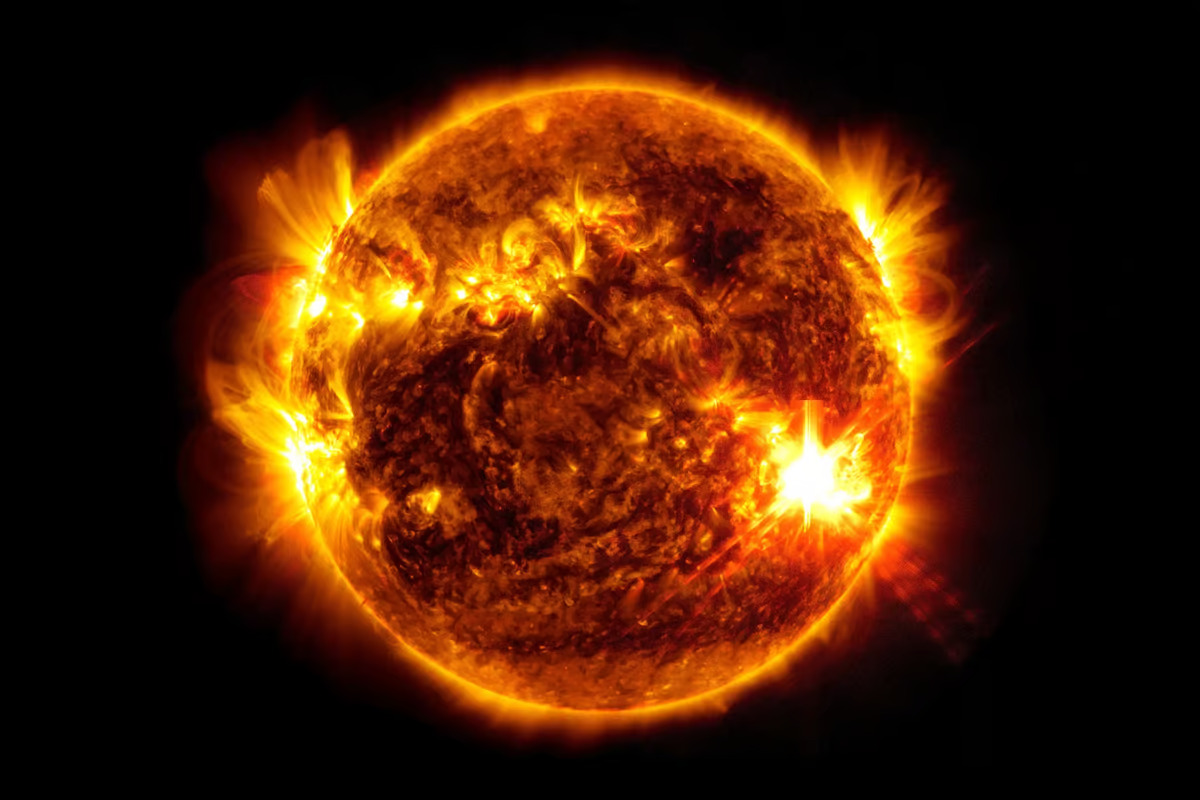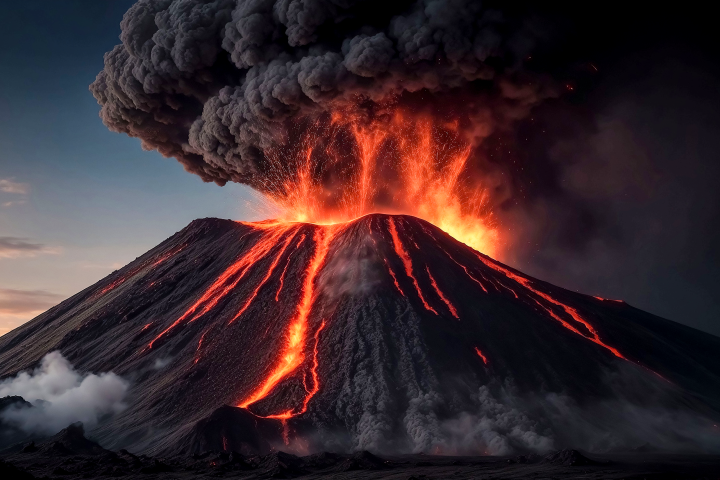 The extremely bright area at about 4 o’clock shows a solar flare from May 10th rated at X5.8 – the image is rendered in a subset of extreme ultraviolet light. NASA SDO –
The extremely bright area at about 4 o’clock shows a solar flare from May 10th rated at X5.8 – the image is rendered in a subset of extreme ultraviolet light. NASA SDO –
Beginning on May 7th, our sun began to get a bit showy. That’s the date two strong solar flares leaped from the surface of the fireball and kicked off about a week of possibly record-breaking solar activity. In fact, NASA says that from May 3rd to 9th it observed 82 “notable” solar flares, with eight of them reaching X-class status – that’s the most powerful type the sun can produce.
The following video showing this activity was recorded by NASA’s Solar Dynamics Observatory (SDO), an instrument-laden semi-autonomous spacecraft that was launched in 2010 to track the behavior of our parent star. The SDO has previously given us stunning time-lapse views of the sun.
–
While those flares are indeed impressive to watch, they’re not even the peak of the sun’s outbursts this month. That happened on May 14th when the same stormy region represented in the video above also shot out a crazy-big flare rated at X8.7. It’s shown in this next video from the space agency.
–
The flares, along with a series of coronal mass ejections (CMEs) that traveled at speeds up to 3 million mph (about 4,830,000 km/h) and reached Earth on May 10th, created a geomagnetic storm with a rating of G5, the highest level awarded to such events.
“The CMEs all arrived largely at once, and the conditions were just right to create a really historic storm,” said Elizabeth MacDonald, NASA heliophysics citizen science lead and a space scientist at NASA’s Goddard Space Flight Center in Greenbelt, Maryland.
A geomagnetic storm of this magnitude hasn’t hit Earth since 2003, and it painted the sky as far south as northern India with with vivid pinks, blues, and greens. NASA says the aurora display we were treated to might be one of the strongest seen in 500 years.
“It’s a little hard to gauge storms over time because our technology is always changing,” said Delores Knipp, a research professor in the Smead Aerospace Engineering Science Department and a senior research associate at the NCAR High Altitude Observatory, in Boulder, Colorado. “Aurora visibility is not the perfect measure, but it allows us to compare over centuries.”
While the images returned by the SDO were impressive enough, NASA plans to improve its observation of the sun’s effect on Earth with the launch of future efforts including its Geospace Dynamics Constellation (GDC) and Dynamical Neutral Atmosphere-Ionosphere Coupling (DYNAMIC) mission. For now, the SDO will remain in its high geosynchronous orbit where it’s set to continue tracking the currently stormy solar region as it swings away from us and heads to the backside of the sun.
“The active region is just starting to come into view of Mars,” said Jamie Favors, director for the NASA Space Weather Program at NASA Headquarters in Washington. “We’re already starting to capture some data at Mars, so this story only continues.”
“We’ll be studying this event for years,” added Teresa Nieves-Chinchilla, acting director of NASA’s Moon to Mars (M2M) Space Weather Analysis Office. “It will help us test the limits of our models and understanding of solar storms.”
Source: NASA
–
























